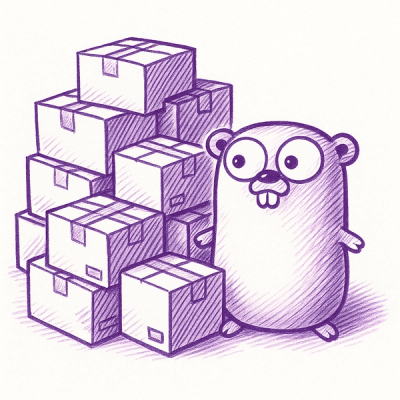
Research
/Security News
Malicious npm Packages Target WhatsApp Developers with Remote Kill Switch
Two npm packages masquerading as WhatsApp developer libraries include a kill switch that deletes all files if the phone number isn’t whitelisted.
ngx-build-plus
Advanced tools
ngx-build-plus is an npm package that extends the Angular CLI build process, allowing for more customization and flexibility. It enables developers to modify the webpack configuration, add custom builders, and integrate additional plugins without ejecting the Angular CLI.
Custom Webpack Configuration
This feature allows you to provide a custom webpack configuration file (e.g., `webpack.extra.js`) to extend or override the default Angular CLI webpack configuration.
```json
{
"architect": {
"build": {
"builder": "ngx-build-plus:build",
"options": {
"extraWebpackConfig": "webpack.extra.js"
}
}
}
}
```Multi-App Builds
This feature enables the building of multiple Angular applications into a single bundle, which can be useful for micro-frontend architectures.
```json
{
"architect": {
"build": {
"builder": "ngx-build-plus:build",
"options": {
"singleBundle": true
}
}
}
}
```Custom Builders
This feature allows you to specify a custom builder script to handle the build process, providing more control over how your application is built.
```json
{
"architect": {
"build": {
"builder": "ngx-build-plus:build",
"options": {
"customBuilder": "./path/to/custom-builder.js"
}
}
}
}
```The `custom-webpack` package allows you to customize the Angular CLI webpack configuration without ejecting. It provides a similar level of flexibility as ngx-build-plus but focuses more on webpack customization rather than additional build features.
The `angular-builders` package offers a set of builders for Angular CLI that extend its capabilities. It includes builders for custom webpack configurations, Jest testing, and more. It is similar to ngx-build-plus but provides a broader range of builders for different tasks.
The `angular-cli-builders` package provides custom builders for Angular CLI, allowing for more advanced build configurations. It is similar to ngx-build-plus in that it extends the Angular CLI build process but focuses on providing a variety of pre-built builders for common use cases.
Extend the Angular CLI's default build behavior without ejecting:
Big thanks to Rob Wormald and David Herges!
ng update ngx-build-plus --force
single-bundle now defaults to false to align with the CLI's default behavior.https://github.com/manfredsteyer/ngx-build-plus
This shows a minimal example for getting started. It uses a minimal partial webpack configuration that is merged into the CLI's one. Representative for all possible custom webpack configurations, the used one just leverages the DefinePlugin to create a global VERSION constant during the build.
Please find the example shown here in the sample application in the folder projects/getting-started.
Create a new Angular project with the CLI
Add ngx-build-plus: ng add ngx-build-plus
Note: If you want to add it to specific sub project in your projects folder, use the --project switch to point to it: ng add ngx-build-plus --project getting-started
Remark: This step installs the package via npm and updates your angular.json so that your project uses custom builders for ng serve and ng build.
Add a file webpack.partial.js to the root of your (sub-)project:
const webpack = require('webpack');
module.exports = {
plugins: [
new webpack.DefinePlugin({
"VERSION": JSON.stringify("4711")
})
]
}
Use the global variable VERSION in your app.component.ts:
import { Component } from '@angular/core';
declare const VERSION: string;
@Component({
selector: 'app-root',
templateUrl: './app.component.html',
styleUrls: ['./app.component.css']
})
export class AppComponent {
title = 'Version: ' + VERSION;
}
Start your application with the --extra-webpack-config switch pointing to your partial webpack config:
ng serve --extra-webpack-config webpack.partial.js -o
If your project is a CLI based sub project, use the --project switch too:
ng serve --project getting-started -o --extra-webpack-config webpack.partial.js
Hint: Consider creating a npm script for this command.
Make sure that the VERSION provided by your webpack config is displayed.
While ngx-build-plus can be used in every Angular configuration, it also comes with some schematics automating some scenarios for Angular Elements. More information about can be found here.
Plugins allow you to provide some custom code that modifies your webpack configuration. In addition to that, they also provide a pre- and a post-hook for tasks that need to take happen before and after bundling. This is an example for an plugin:
export default {
pre(options) {
console.debug('pre');
},
config(cfg) {
console.debug('config');
return cfg;
},
post(options) {
console.debug('post');
}
}
As this plugin is written with TypeScript you need to compile it.
The config method works like a configHook (see above).
To use a plugin, point to it's JavaScript representation (not the TypeScript file) using the --plugin switch:
ng build --plugin ~dist\out-tsc\hook\plugin
The prefix ~ points to the current directory. Without this prefix, ngx-build-plus assumes that the plugin is an installed node_module.
You can also use plugins to implement different merging strategies. The following plugin demonstrates this:
var merge = require('webpack-merge');
var webpack = require('webpack');
exports.default = {
config: function(cfg) {
const strategy = merge.strategy({
'plugins': 'prepend'
});
return strategy (cfg, {
plugins: [
new webpack.DefinePlugin({
"VERSION": JSON.stringify("4711")
})
]
});
}
}
To execute this, use the following command:
ng build --plugin ~my-plugin.js
One more time, the ~ tells ngx-build-plus that the plugin is not an installed node_module but a local file.
This shows another example for using ngx-build-plus. It uses a custom webpack configuration to define some dependencies of an Angular Element as external which can be loaded separately into the browser and shared among several bundles.
If you are not interested into this very use case, skip this section.
The result of this description can be found in the repository's sample directory.
Create a new Angular CLI based project and install @angular/elements as well as @webcomponents/custom-elements which provides needed polyfills:
ng add @angular/elements
npm install @webcomponents/custom-elements --save
Expose a component as an Custom Element:
import { BrowserModule } from '@angular/platform-browser';
import { NgModule, Injector } from '@angular/core';
import { createCustomElement } from '@angular/elements';
import { AppComponent } from './app.component';
@NgModule({
imports: [
BrowserModule
],
declarations: [
AppComponent
],
providers: [],
bootstrap: [],
entryComponents:[AppComponent]
})
export class AppModule {
constructor(private injector: Injector) {
}
ngDoBootstrap() {
const elm = createCustomElement(AppComponent, { injector: this.injector });
customElements.define('custom-element', elm);
}
}
Install ngx-build-plus:
When using Angular >= 7 and CLI >= 7, you can simply use ng add for installing ngx-build-plus:
ng add ngx-build-plus
If you are using a monorepo, mention the project you want to install ngx-build-plus for:
ng add ngx-build-plus --project myProject
Alternative: If, and only if, this does not work for you, e. g. because you use an earlier Angular version, you can install the library manually:
npm install ngx-build-plus --save-dev
After this, update your angular.json:
[...]
"architect": {
"build": {
"builder": "ngx-build-plus:build",
[...]
}
}
[...]
Create a file webpack.extra.js with a partial webpack config that tells webpack to exclude packages like @angular/core:
module.exports = {
"externals": {
"rxjs": "rxjs",
"@angular/core": "ng.core",
"@angular/common": "ng.common",
"@angular/platform-browser": "ng.platformBrowser",
"@angular/elements": "ng.elements"
}
}
Build your application:
ng build --prod --extraWebpackConfig webpack.extra.js --output-hashing none --single-bundle true
You will see that just one bundle (besides the script.js that could also be shared) is built. The size of the main.js tells you, that the mentioned packages have been excluded.

Copy the bundle into a project that references the UMD versions of all external libraries and your main.ts. You can find such a project with all the necessary script files in the deploy folder of the sample.
<!doctype html>
<html lang="en">
<head>
<meta charset="utf-8">
<title>ElementsLoading</title>
<base href="/">
<meta name="viewport" content="width=device-width, initial-scale=1">
<link rel="icon" type="image/x-icon" href="favicon.ico">
</head>
<body>
<!-- Consider putting the following UMD (!) bundles -->
<!-- into a big one -->
<!-- core-js for legacy browsers -->
<script src="./assets/core-js/core.js"></script>
<!-- Zone.js -->
<!--
Consider excluding zone.js when creating
custom Elements by using the noop zone.
-->
<script src="./assets/zone.js/zone.js"></script>
<!-- Polyfills for Browsers supporting
Custom Elements. Needed b/c we downlevel
to ES5. See: @webcomponents/custom-elements
-->
<script src="./assets/custom-elements/src/native-shim.js"></script>
<!-- Polyfills for Browsers not supporting
Custom Elements. See: @webcomponents/custom-elements
-->
<script src="./assets/custom-elements/custom-elements.min.js"></script>
<!-- Rx -->
<script src="./assets/rxjs/rxjs.umd.js"></script>
<!-- Angular Packages -->
<script src="./assets/core/bundles/core.umd.js"></script>
<script src="./assets/common/bundles/common.umd.js"></script>
<script src="./assets/platform-browser/bundles/platform-browser.umd.js"></script>
<script src="./assets/elements/bundles/elements.umd.js"></script>
<!-- Calling Custom Element -->
<custom-element></custom-element>
</body>
</html>
Test your solution.
Hint: For production, consider using the minified versions of those bundles. They can be found in the node_modules folder after npm installing them.
Hint: The sample project contains a node script copy-bundles.js that copies the needed UMD bundles from the node_modules folder into the assets folder.
FAQs
Extends the Angular CLI's build process
The npm package ngx-build-plus receives a total of 190,843 weekly downloads. As such, ngx-build-plus popularity was classified as popular.
We found that ngx-build-plus demonstrated a healthy version release cadence and project activity because the last version was released less than a year ago. It has 1 open source maintainer collaborating on the project.
Did you know?

Socket for GitHub automatically highlights issues in each pull request and monitors the health of all your open source dependencies. Discover the contents of your packages and block harmful activity before you install or update your dependencies.

Research
/Security News
Two npm packages masquerading as WhatsApp developer libraries include a kill switch that deletes all files if the phone number isn’t whitelisted.

Research
/Security News
Socket uncovered 11 malicious Go packages using obfuscated loaders to fetch and execute second-stage payloads via C2 domains.

Security News
TC39 advances 11 JavaScript proposals, with two moving to Stage 4, bringing better math, binary APIs, and more features one step closer to the ECMAScript spec.